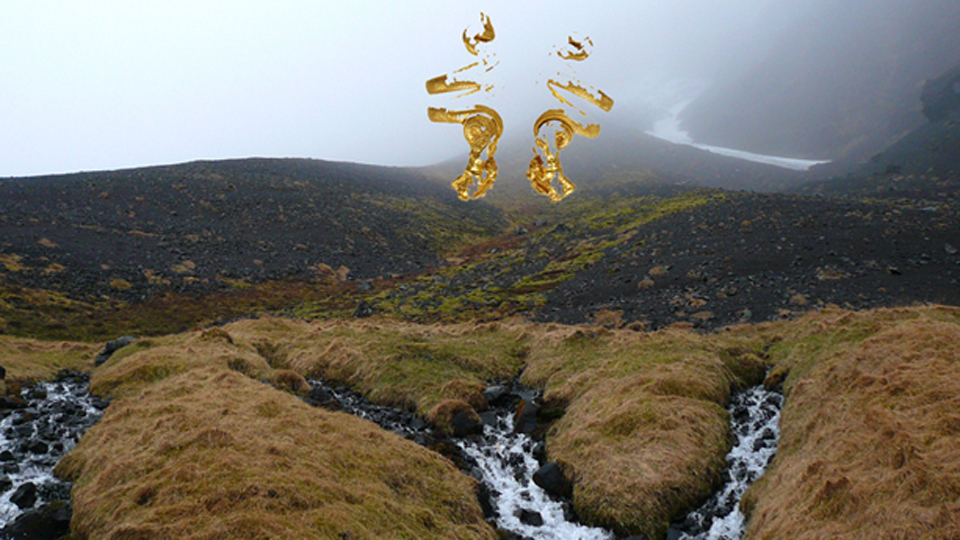We like to possess a sense of self. We are constantly choosing aspects of the world with which to define ourselves and construct our own personal universe. We put together an identity based on our traits and our surroundings, and our art becomes a mirror of our interactions with the natural world.
This is the idea behind “Genius Loci”, a traditional-meets-contemporary art exhibit on display at the Art Gallery of Mississauga until November 4. Admission is free, and the gallery offers guided gallery walks, themed documentary screenings, and artist performances every Saturday in October. The show presents the work modern landscape artists alongside iconic pieces from the Group of Seven.
The name “Genius Loci”—Latin for “the spirit of a place”—sets the stage for a wordless conversation about humanity’s proximity to nature through concepts that span artistic generations.
Stuart Keeler, the exhibition’s curator, has the tour begin with a vibrant red wall covered with oil-on-canvas paintings. Framed posters, all the same size, fill the gaps between the much larger paintings. At first, it’s difficult to wrench one’s attention away from the centrepiece, the largest painting in the assembly: a bold, streaky forest scene by Emily Carr.
One piece near the opening of the exhibit seems out of place in this exhibition of landscapes: Gu Xiong’s “100 Chinese Cultural Revolution Posters”. Grinning youths stand proud and defiant in uniforms decorated with a symbolic red star. Surrounding them are family, supporting crowds, and occasionally tall, round mountains or farmers’ fields laid out in grids. It’s dwarfed by the nearby portraits of Algoma and Georgian Bay riverbanks, and the viewer is unsure for a moment whether the modern artists are only here to pay homage to the greatness of the Group of Seven.
The doubt is dispelled by the following pair of paintings. The first is “Winter Morning at St. Tite des Caps” by A.Y. Jackson, which shows a wintry Québec countryside populated by rural chalets among snowy hills warmed by pink and yellow rays.an unframed canvas covered with overlapping, thumbnail-sized acrylic squares. The two pieces couldn’t be more different. The latter, James Fowler’s “Père Raquette”, looks like a pixelated cross-section of an underground anthill. The only resemblance is the colour scheme of pale greys, pale blues, pale pinks, and beiges.
Fowler’s accompanying description tells the story of AY Jackson’s quick morning sketches; these had to be so rushed in order to prevent his oil paints from freezing that Jackson would barely have time to settle on a colour scheme. The early excursions to the locations earned Jackson the nickname “Père Raquette” (“Father Snowshoe”) and inspired Fowler’s reimagination of a birch tree. Inspired by this historical connection, Fowler’s piece taps into one the principles of the Group of Seven: an intense preoccupation with colour accuracy that took precedence over other elements.
A highly promoted section of the exhibit consists of two glass display tables. In one of the tables are the three wooden palettes of Group of Seven painters A.J. Casson, Tom Thomson, and F.H. Varley. In the other table lie three identical Petri dishes of microbes swabbed from the palettes. According to artist Jon Sasaki, “The resulting colonies will constitute an environment of sorts—albeit a far more modest one than the painters depicted in their work.” However, the unique scientific concept yields only disappointment: the dishes are so covered in condensation that none of the bacteria cultures are visible.
Sculptor Yael Brotman brings out a third dimension in his display of two model trailer homes built with Japanese paper, foam, and wire. Brotman’s experience of driving a rented trailer into the woods to escape the city was motivated by a love of nature he shares with Tom Thomson. As the viewers tower over the fragile model trailers, they find themselves in the position, perhaps even the role, of the surrounding nature. It puts into perspective the unstable power mankind has over nature.
Each piece and its corresponding Group of Seven inspiration reaffirms the awe and reverence with which we still view the natural world. And each one adds a modern, personal element as the artist depicts their experience with the land through real and imagined experiences. Each piece answers the overarching question, “Does being Canadian mean having a special relationship with the land?” with a definite yes.



